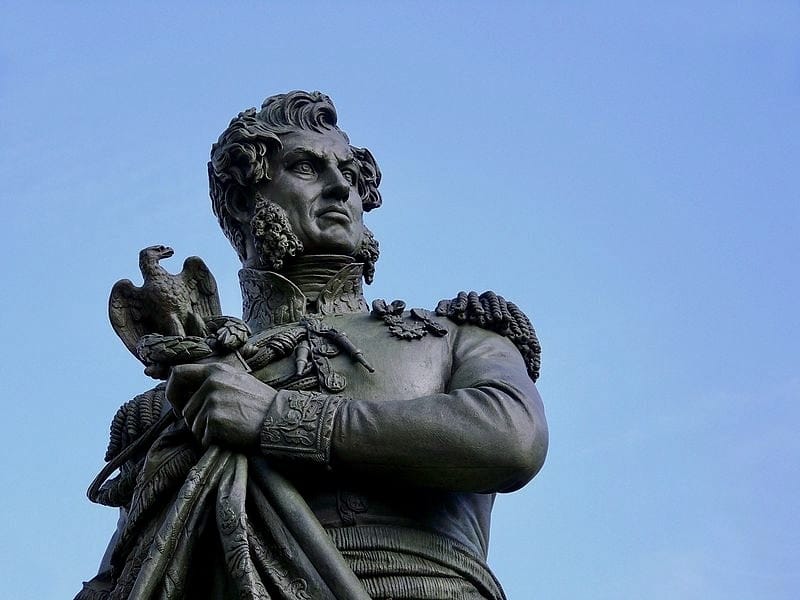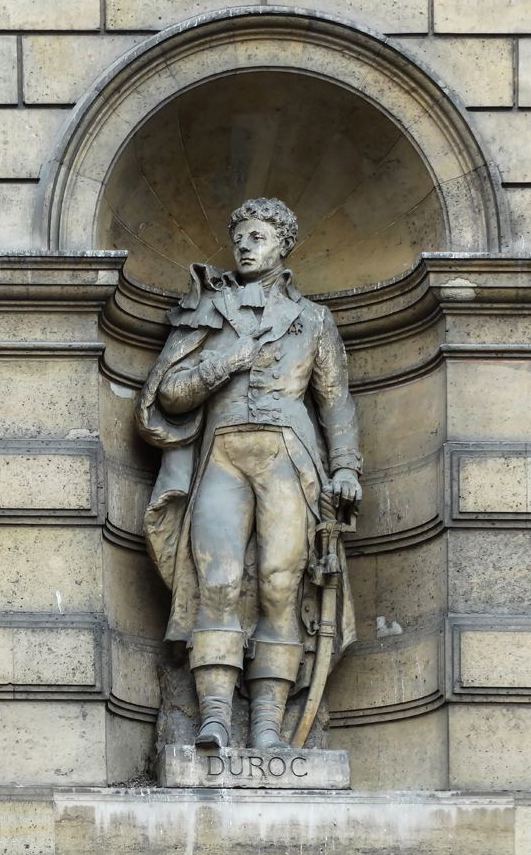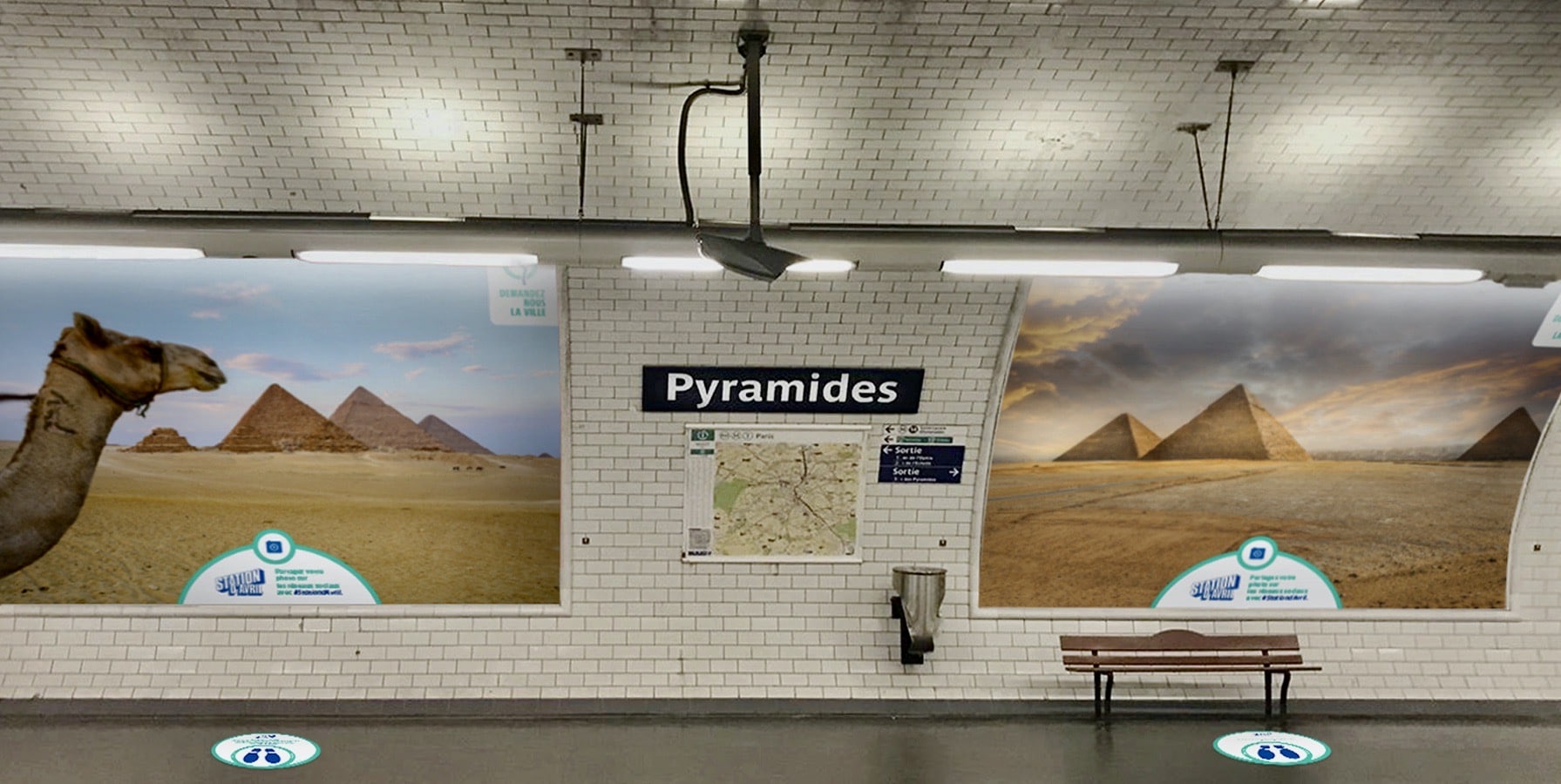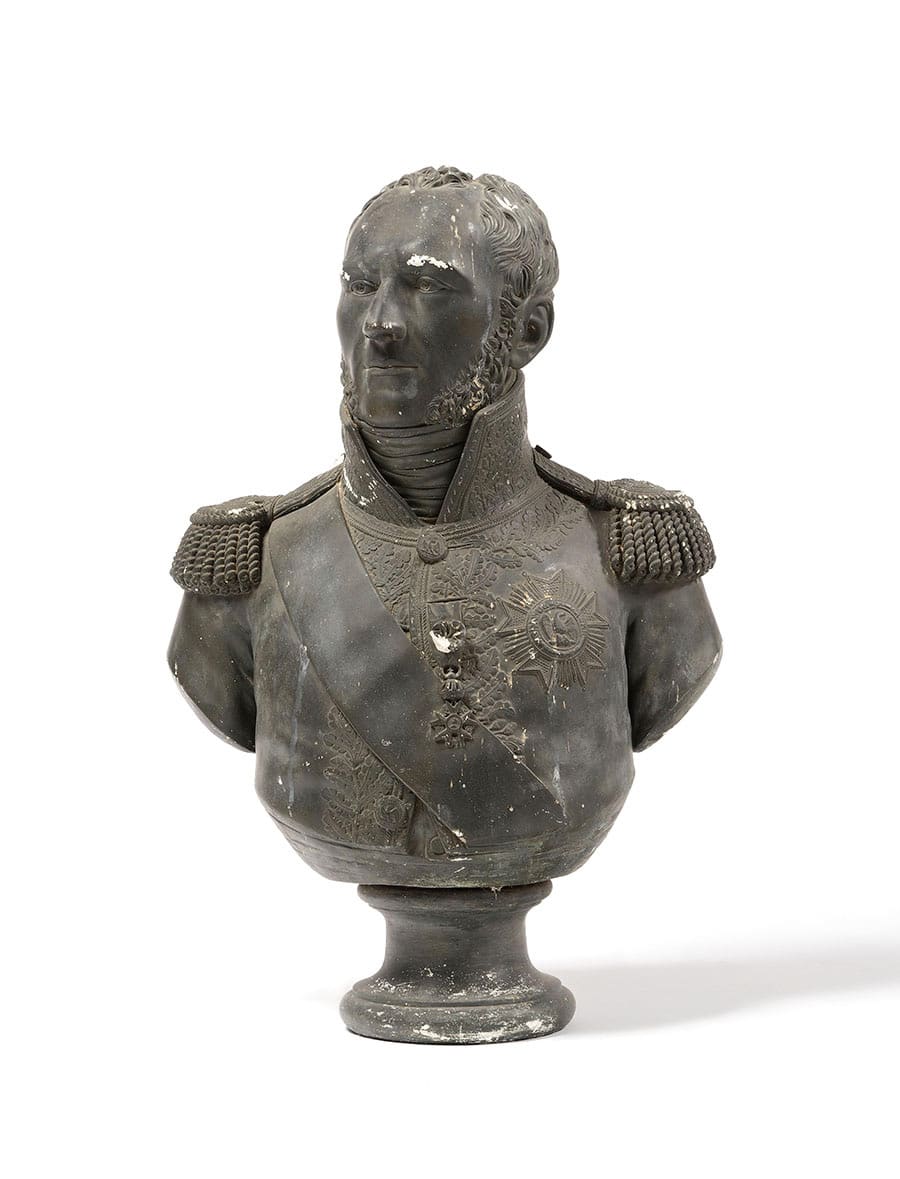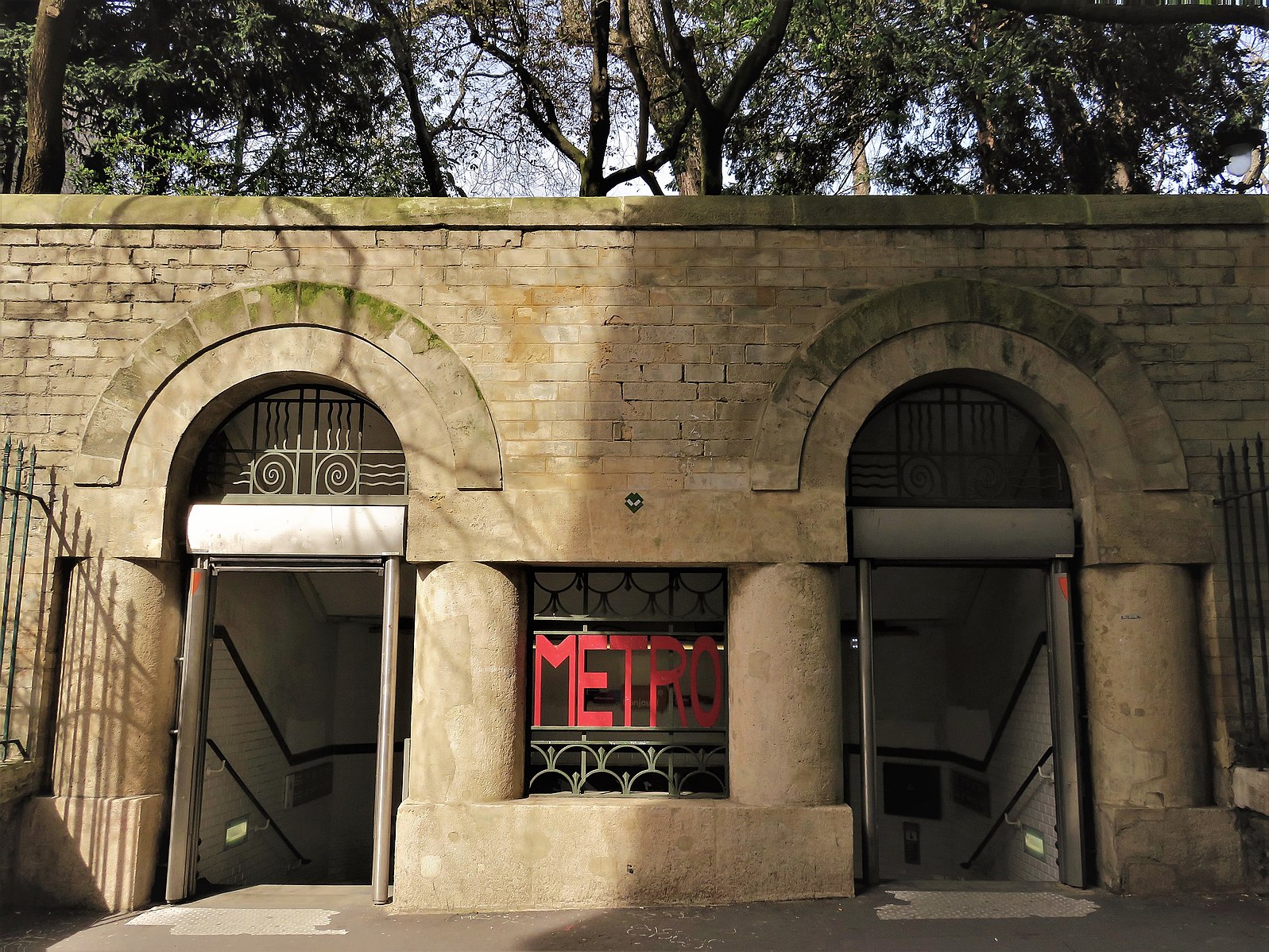Among the intramural Paris metro stations, some are famous all over the world and reflect the great history of France. We thus read in filigree on the maps of Paris, the great moments of the Napoleonic epic.
The pride of the Grande Armée
Swarmed on almost all the lines of the Parisian metro, the great military names who forged the reputation of the Grande Armée reveal the importance of the Napoleonic Empire in the history of France. On line 6, the Cambronne station pays homage to the man who is still said to be the author of the famous “word”. Pierre Cambronne (1770 – 1842) , brilliant brigadier general then Major of the Imperial Guard in 1814, was one of Napoleon’s most loyal. At his side on the Island of Elba, he impressed the English at Waterloo (June 1815) with a determined but desperate resistance, responding forcefully to their summons to surrender with the famous word that made him famous: a “Shit ! Exasperated, the conciseness of which was unanimously appreciated in both camps. Dying on the battlefield, he was taken prisoner by the British and then freed. He died 27 years later in Nantes. Victor Hugo (1802 – 1885), whose aversion to the Second Empire was no secret, remembered the famous word and used it skillfully, believing that “Cambronne in Waterloo buried the First Empire in a word where the second was born. A remark which, no doubt, does not strengthen the already loose ties between Napoleon III and the writer.
A few stations from Cambronne, General Jean-Baptiste Kléber (1753 – 1800) also gave his name to a stop on line 6. Although he distinguished himself just as much during the wars of the French Revolution, his independence of mind did not allow him to access a command-in-chief. In 1797, Bonaparte took him with him to Egypt but left without his general to whom he gave before his departure the supreme command of the army of Egypt. Left in a delicate situation against the English, Kléber had to sign the D’El Arich agreement in January 1800. The latter scorned by Admiral Keith, the general resumed hostilities and brilliantly won the Battle of Heliopolis in March before being assassinated in Cairo in 1800. His ashes now rest on Place Kléber, in Strasbourg.
This walk in the Parisian metro is surprisingly to raise the English cowardice who financed the battle of Austerlitz or Battle of the Three Emperors without participating. Because the Gare d’Austerlitz station, line 10, bears the memory of this dazzling Napoleonic victory, the name of which was delicately removed from the Eurostar route when our teasing British neighbors did not spare us, a few years ago, a welcome to Waterloo. On December 2, 1805, Emperors Francis II and Alexander I faced the French Emperor strategist in southern Moravia. Napoleon’s tactical genius was deployed there from the country lanes to the battlefield, making a lasting mark on history: this warlike masterpiece is still taught in military schools today. On the same line, we find the memory of Molitor (1770 – 1849), Gabriel of his first name, who participated in many Napoleonic campaigns after having cut his teeth during the Revolution then remained faithful to the Emperor whom he joined during the Hundred Days. In 1809, he had distinguished himself at the battle of Wagram (which a station on line 3 is remembered for) just like Christophe de Michel du Roc dit Duroc (1772 – 1813) whose name also marks a stop on line 10 .
This grand marshal of the palace of Napoleon I inscribed his name in the Italian campaign but his diplomatic qualities earned him much more than military honors by obtaining the full confidence of Bonaparte. Courageous, intelligent and loyal, Duroc was personally responsible for the safety of the Emperor without renouncing important missions that Napoleon I wanted to see handled only by himself. On his death, extraordinary honors were paid to him and in 1815, the deposed Emperor chose nothing other than the name of Duroc to go to Rochefort from Malmaison. Today, the ashes of this brilliant man, whose name is engraved on the Arc de Triomphe, rest alongside Bonaparte at the Invalides.
On line 9, the Jena stop takes us to Germany, a memory of the battle of October 14, 1806 between the French and the Prussians. However, the German campaign had started well before and on October 7, 1805 in Donauwörth, almost a year to the day before Jena, Rémy Isidore Joseph Exelmans (1775 – 1852), known as “The lion of Rocquencourt”, saw himself honored with to carry to the Emperor the flags taken from the enemy. The reception he received marked him for a long time because Bonaparte was laudatory: “I know that we are not braver than you: I am making you an officer of the Legion of Honor. Make no mistake, the familiarity here was worth much more than the compliment. Napoleon I, after that, always spoke to him. Today a station bears the name of the man who won, just after the Emperor’s abdication, the last French victory in the Napoleonic wars. Had he, our Exelmans, obtained these same honors if he had not befriended Joachim Murat in his youth?
The same Murat who in the eyes of the Emperor was to the cavalry what Drouot was to the artillery. Antoine Drouot (1774 – 1847), whose name marked history as much as the art market, is today in the company of Richelieu: line 9, the Richelieu-Drouot station does not bother with characters. Does the ambitious Duke of Richelieu, skilful strategist, devious and intransigent get along with this Napoleonic general? If we believe the description given by Napoleon, surely the cohabitation is not easy …
“Drouot is one of the most virtuous and modest men there was in France, although he was endowed with rare talents. Drouot was a man […] who lived as satisfied, for what concerned him personally, on 40 sous a day as if he enjoyed the income of a sovereign. Charitable and religious, his morality, his probity and his simplicity would have been honored in the century of the most rigid republicanism. ”
Ironically, we doubt we can attribute to the famous cardinal the qualities of the humble general while those which ordinarily characterize a general the cardinal possessed all of them.
On line 4, the Mouton-Duvernet and Morlan stations pay tribute to two soldiers fully engaged in the Napoleonic campaigns. Régis Barthélemy Mouton-Duvernet (1770 – 1816) distinguished himself in Arcole during the Italian campaign while François-Louis de Morlan dit Morland (1771 – 1805) died of his fatal wounds at the Battle of Austerlitz. His name appears today on the Arc de Triomphe.
Some Paris metro stations do not honor the memory of great people but those of memorable places. This is the case with the Louvre-Rivoli station, line 1, which serves the palace on the rue de Rivoli, named in honor of Napoleon Bonaparte’s victory over Austria on January 14, 1797. Likewise, the Campo-Formio station on line 5 celebrates the treaty signed on October 18, 1797 in the eponymous city of Veneto. This treaty closed the Franco-Austrian war for the first time and allowed France to obtain from Austria Belgium, part of the left bank of the Rhine, the Ionian Islands and the recognition of the Cisalpine Republic.
Line 7 and 14, the Pyramides station returns to the mythical places of the Egyptian countryside. With this innate sense of propaganda which always characterized him, Napoleon named the battle of July 21, 1798, which pitted him against the Mamluk forces with the name of “Battle of the Pyramids”. A very romantic name since the battlefield had in common with the venerable thousand-year-old monuments only to be extremely dusty.
The Simplon line 4 station takes us far from the hustle and bustle of Paris to remind us of the calm and invigorating air of the Swiss Alps, where Napoleon had a road built in the Simplon pass first, then a hospice whose first stone was laid in 1813.
Names of glorious soldiers still mark the stations Pelleport (line 3 bis), Pernety (line 13) or Lecourbe (line 6). General of the Empire Pierre de Pelleport (1773 – 1855) was of the first promotion of the Legion of Honor and participated in the Grand Army in the campaign of Austria, Germany and Poland, respectively in 1805, 1806 and 1807.
Joseph Marie de Pernety (1766 – 1856) was admired for his bravery during the Italian campaign, was part of all the great Napoleonic battles and Marshal of the Empire Massena did not fail to publicly compliment him during the Battle of Wagram.
Claude Lecourbe (1759 – 1815) also distinguished himself with talent, but not enough to forget his friendship with Jean Victor Marie Moreau (1763 – 1813), accused of conspiring with his wife against the rise to power of Bonaparte. Lecourbe, who had the courage (or the stupidity) to take a stand for his friend, was exiled to the Jura. When it was Napoleon’s turn to taste the bitterness of exile , he remembered Lecourbe “Very brave, he would have been an excellent Marshal of France; he had received from nature all the qualities necessary to be an excellent general. “
Let us not forget Armand Augustin Louis, fifth Marquis de Caulaincourt (1773 – 1827) who baptized, line 12, half of the name of a station, sharing the other half with the famous French naturalist Jean-Baptiste Lamarck (1744 – 1829 ). If the two men have one day met, perhaps crossed paths, they were probably far from imagining that barely a century later they would dabble in the delicious promiscuity of the Parisian subways. Caulaincourt nevertheless had the opportunity throughout his life to taste the great outdoors since he was Russian Ambassador at a time when travel was difficult. When he returned from the Russian campaign, he was also the confidant of Bonaparte’s sleigh, an adventure of 14 days and 14 nights from which his famous story was born. In sleigh with the Emperor . His skill in the art of diplomacy allowed him to gain the confidence of the Emperor Napoleon I at the same time as that of Tsar Alexander I. Did this fine mind, “a man of heart and righteousness” according to Bonaparte himself, have any humor? No doubt not as much as Victor Faÿ de Latour-Maubourg (1768 – 1850) whose name adorns a station on line 8. Musketeer at 14, commander of the first cavalry corps at 45, he had his thigh torn off by a cannonball during the Battle of Leipzig in October 1813. His servant, more sensitive to physical losses than his master probably was, cried hot tears over his missing leg when Latour-Maubourg, who doubtless knew the virtues of positivism, addressed a remark that has remained famous to his valet:
Console yourself my friend, the harm is not so great for you… After all you will only have one boot to shine!
Scientists in the service of the Emperor
We know that Bonaparte is suspicious of doctors, even going so far as to doubt – a little by provocation – of the usefulness of medicine. On line 6 of the Paris metro, however, a station bears the name of the man who succeeded in convincing the First Consul and then the Emperor of the usefulness of this discipline. The Corvisart station thus pays homage to Jean-Nicolas Corvisart (1755 – 1821), a brilliant doctor with a thoughtful character who met Napoleon in July 1801 before quickly becoming his personal doctor. Once the Empire was established, the doctor was not only responsible for ensuring the health of the imperial family but also other missions relating to the management of epidemics and contagious diseases. The man, moreover, had little taste for the gold of the court and wanted his autonomy, which is why he refused accommodation in the Tuileries. His efficiency, his objectivity and his will to take care of the best surpassed his respect for etiquette, he who never hesitated to firmly rebut the Emperor who did not respect his prescriptions seriously enough. Conversely, Josephine’s bulimia on pills prompted her to regularly administer placebo in order to calm her anxieties without endangering her health. Faithful to the Emperor as a family doctor to his long-standing patients, Corvisart accompanied Bonaparte on several campaigns and again became his personal doctor during the Hundred Days, but his age forced him to stop practicing after Waterloo. Despite everything, he was one of the last to greet the Emperor before his departure for Rochefort. The man had succeeded where his discipline had failed, to say even Napoleon who declared: “I do not believe in medicine, but I believe in Corvisart. ”
Gaspard Monge (1746 – 1818) meets on line 7. This renowned scientist marked the history of mathematics interested in geometry, infinitesimal analysis and analytical geometry. Also a professor of physics and topography, Monge was one of those scholars who produced an abundant, important and completely original work. His work on fortifications has since been known as descriptive geometry. Appointed Minister of the Navy during the Revolution, his knowledge and science concerning the weapons of war were immense. After the throes of the Revolution, he became a professor at the École normale supérieure and soon one of the founders of the École Polytechnique. In May 1796, he was appointed member of the commission charged with going to Italy to recover “the monuments of art and science which the peace treaties grant to the victorious French armies”. On this occasion he made the acquaintance of Bonaparte, then general. The two men liked and sympathized until they became close friends. Monge was also invited to the coronation of Napoleon I at Notre-Dame and exile in Saint Helena did not prevent Bonaparte from remembering in a laudatory manner his friend who was no less admired by Josephine. This man of science with considerable work was first buried in the Père-Lachaise cemetery before his ashes were transported to the Pantheon.
Finally, line 5, let’s stop at the Breguet-Sabin station, not to pay tribute to the punctuality of the Parisian subways, but to the one who allowed it to be noticed: the watchmaker and physicist Abraham-Louis Breguet (1747 – 1823). Famous inventor of self-winding watches, we owe him the development of perpetual watches that took advantage of the movements of walking to wind themselves without any manipulation. Napoleon Bonaparte was one of his most loyal clients. Should we be surprised, he who could not bear to waste his time, it is quite natural that he appreciated the instruments capable of measuring it. In 1798, before the general’s departure for the Egyptian campaign, he purchased a repeater watch, a travel clock and a perpetual watch. Renowned for their reliability, solidity and refinement, Abraham-Louis Breguet watches had enough to seduce the young general, then in full political and social ascension. Once First Consul and then Emperor, Napoleon brought to the watchmaker an upscale and wealthy clientele who made his fortune. In particular, in 1810 Breguet manufactured the first wristwatch which was sold in 1812 to Caroline Murat, sister of the Emperor and Queen Consort of Naples.
Vous aimez cet article ?
Tout comme Bonaparte, vous ne voulez pas être dérangé sans raison. Notre newsletter saura se faire discrète et vous permettra néanmoins de découvrir de nouvelles histoires et anecdotes, parfois peu connues du grand public.
Félicitations !
Vous êtes désormais inscrit à notre newsletter.
With just over 300 stations, the metro serves Paris and its metropolitan area throughout the history of France. From Antiquity to the present day, the names of the stations bear witness to exchanges, conflicts, discoveries, culture and of course the great figures who marked the personality of the nation. If the location of the stations often corresponded to the streets which they served on the surface, the fact remains that the Napoleonic history, from the campaigns of Italy to the Empire, considerably imprinted its great names in the geography of the capital city. Note the absence of a Napoleon Bonaparte station, as are many French heads of state. King Philippe Auguste, Clémenceau or Mitterrand (in connection with the eponymous library) received this honor but the Parisian metro seems to have the preference for characters who have accompanied History, a way of keeping the memory alive and daily, while traveling through Paris. and its surroundings.
Marielle Brie
Marielle Brie est historienne de l’art pour le marché de l’art et de l’antiquité et auteur du blog « Objets d’Art & d'Histoire ».
